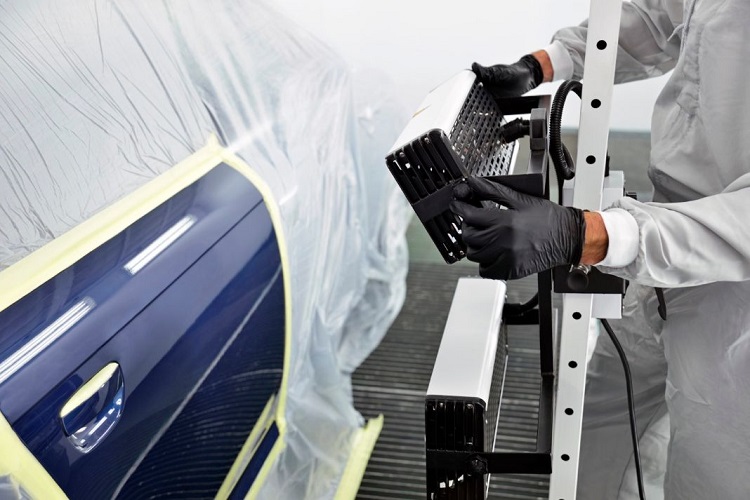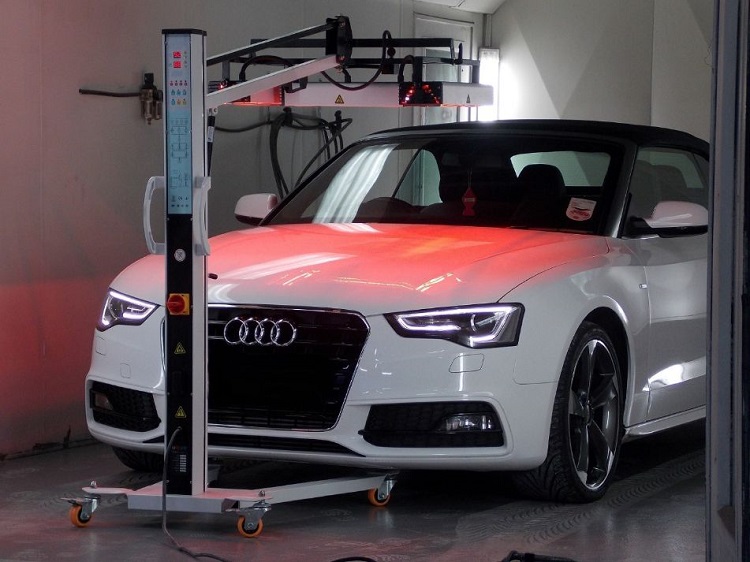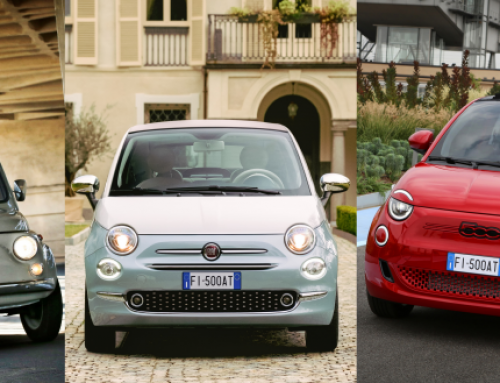*Advertisement feature*.
If you’re seeking to spruce up your car and make it look as good as when you bought it, if not better, you might be considering investing in a modification to your vehicle. While a car’s hidden components are its most essential features for smooth performance, it is the bodywork that matters most for appearance. The bodywork is the first thing people see and what makes a car attractive. Whether showing off to others or keeping yourself happy, you can modify the bodywork by applying a coating. The coating helps to provide a shiny and stylish appearance while protecting the car’s exterior from the weather and other elements.
One of the best types of coating that you can apply to a car is a ceramic coating, which InfraTech Infrared Solutions have exceptional knowledge of. InfraTech supplies body shops and other automotive businesses with infrared paint curing lamps that aid in repairs and other vehicle work. Recently, they’ve worked with many companies that have used the lamps when applying ceramic coating. With an excellent understanding of the subject, InfraTech has provided us with some pointers on what you need to know when thinking about adding ceramic coating to your car.
What Is Ceramic Coating?
Firstly, as ceramic coating and its applications within the automotive industry have only surged in recent years, you may not be fully aware of what it is and its benefits. Ceramic coating is similar to wax, but it offers a premium solution. It comes in the form of a liquid polymer that bonds with the car’s paintwork when applied. As it is a permanent or semi-permanent bond, the coating won’t wash away or need to be applied repeatedly. It lasts longer than wax, as much as several years compared to months.
Like wax, ceramic coating adds an additional layer of protection to a car’s bodywork, protecting against environmental contaminants like dirt, grime, acid rain, and tree sap. It also has benefits in preventing damage caused by the sun’s UV rays, chemical stains and etching. These contaminants can drastically affect a car’s appearance and value. While many key benefits are not immediately noticeable, ceramic coating can also add a glossy finish to your vehicle. In the long run, the vehicle’s value will likely increase due to the ceramic coating.
Ceramic coating helps to keep your car looking cleaner for longer. While it doesn’t mean your car will look nice forever, it will make it significantly easier to clean. Car maintenance will become easier with dirt less likely to set and water sliding off more easily. It’s important to note that the coating won’t make your car invincible, as you can still experience issues like scratching and swirl marks. Ceramic coating is very affordable as you can purchase a professional product for a few hundred pounds or a DIY can for as little as £20.
Applying Ceramic Coating
You can either apply ceramic coating yourself or turn to experts at an automotive garage. DIY products can be applied by yourself, and they are usually quite simple to do so as long as you follow instructions, while a professional product requires you to take the car to a garage. Applying ceramic coating is a serious task, and you should make sure that every part of the process is handled with care. Messing up any step may risk a shoddy result or damage the appearance of your car’s bodywork.
If applying ceramic coating yourself, you should follow the instructions from your product manufacturer. However, we will do our best to summarise what the process usually involves. Firstly, ensure that you thoroughly wash every inch of the car’s exterior to remove any dirt and grime that may interfere with applying the coating layer. It’s also recommended that you use a clay bar cleaning kit to remove surface contamination and polish the vehicle to correct paint imperfections. Finally, use an alcohol solution to remove chemicals, polishes, lubricants, oils and so forth that may be present on the body. Your car should now be ready to apply ceramic coating!
When adding the coating to your vehicle, it’s recommended to do so out of direct sunlight. Using a small cloth wrapped around a sponge, apply a few drops of the coating. You can wipe the coating onto the bodywork in a circulation motion or crosshatch pattern, whatever feels most comfortable and consistent for you. Apply it across the entire bodywork and continue adding more drops of the product as required. When fully covered, leave the car indoors to allow the coating to cure.
How Infrared Curing Can Help
At InfraTech, we are experts in paint curing for vehicles. As with paint, your ceramic coating will need time to cure. The ceramic coating curing process is essential to ensure that the chemical reaction is complete. While the bodywork may look dry outside, the benefits won’t be felt until it is completely cured. Curing means that the coating has hardened and is ready to protect your vehicle against environmental contaminants.
You can leave your vehicle to dry and cure in its own time, but this can take several hours. Infrared curing is a high-performance technique that uses the power of infrared technology to quicken the process. With an infrared lamp, curing the coating can take just a few minutes. This is why body shops tend to turn to infrared curing, as it allows them to increase productivity and ensure customers receive their vehicles back in no time.


Infrared Paint Curing Lamps | InfraTech Infrared Solutions (infratech-solutions.co.uk)


















Leave A Comment